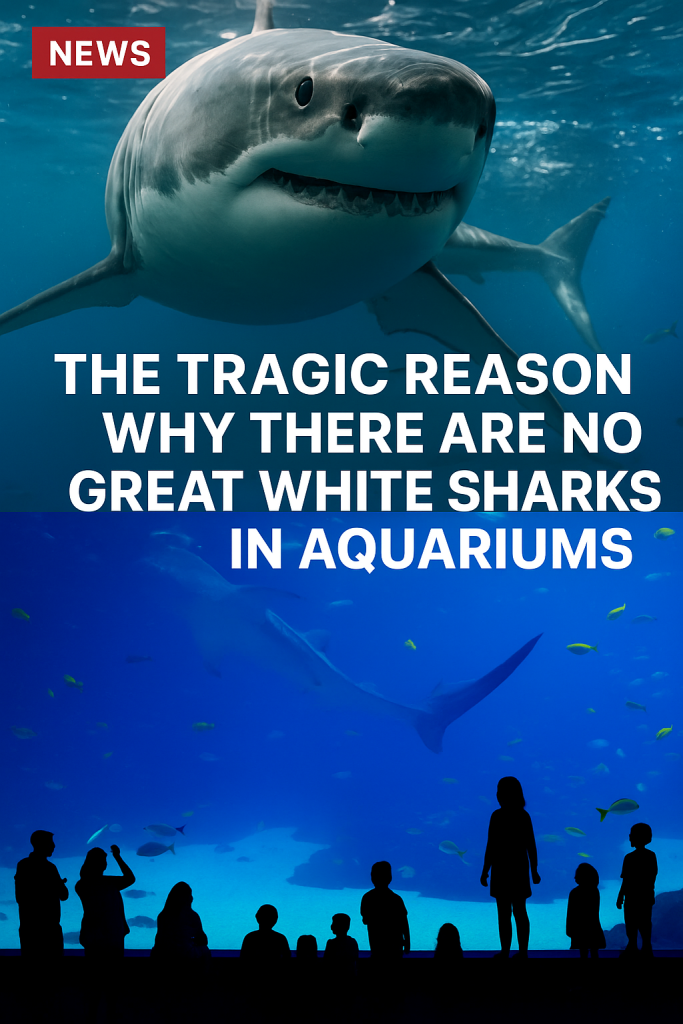The great white shark, an iconic predator of the ocean, is notably absent from aquarium exhibits worldwide. While their fearsome reputation and majestic presence might suggest they’d be a star attraction, the reality behind their absence is far more complex — and deeply tragic.
The Science and Struggle of Great White Shark Captivity
For decades, marine biologists and aquarium curators have attempted to keep great white sharks (Carcharodon carcharias) in captivity with hopes of promoting education and conservation. However, these efforts have invariably been met with failure. Unlike other large marine species, great whites simply do not thrive in confined environments. Their capture and subsequent survival attempts have illuminated profound challenges tied to their biology and behavior.
Great white sharks are highly migratory creatures, often traversing large expanses of open ocean. Their need for vast territories cannot be overstated; they are known to swim hundreds of miles to hunt, mate, and complete their natural life cycles. The constraints of a tank, no matter how large, simply cannot replicate their dynamic natural habitat.
The Tragic Toll of Capturing Great White Sharks
Perhaps most heartbreaking are the stories surrounding the capture and transport of these sharks. When caught, they experience intense stress, often resulting in a fatal condition known as “capture myopathy,” which affects muscle and organ function. Furthermore, great whites have highly sensitive skin and specialized buoyancy control, causing even minimal handling to severely injure them.
One of the most notorious incidents involved a captured great white held temporarily in a sea pen, where the shark exhibited signs of extreme distress, refusing to eat and rapidly deteriorating. The act of confinement frequently leads to physical trauma such as collision with tank walls, ultimately resulting in grave injuries or death. In multiple attempts worldwide, sharks held for educational exhibits have survived for only days to weeks.
Why Are Other Sharks Easier to Keep?
Other shark species are more commonly found in aquariums, primarily because they are smaller, less migratory, and more adaptable to confined conditions. Species like sand tiger sharks and nurse sharks have proven more resilient in captivity. Great whites, in stark contrast, require a combination of swimming space, water conditions, diet, and psychological freedom that tanks are incapable of replicating.
Recent research underscores how the great white’s unique physiology — including high metabolic demands and complex sensory systems — makes adaptation to an aquarium environment particularly difficult. Their hunting behavior, which involves sudden bursts of speed and large open-water chases, simply cannot be mimicked within artificial boundaries.
Innovative Alternatives and Conservation Efforts
In 2024, institutions continue to seek alternatives to dangerous and impractical captivity attempts. Instead, many are turning to cutting-edge technologies such as advanced virtual reality exhibits, drone-based marine observations, and underwater cameras to study and educate about great whites. These methods allow the public to appreciate and learn about these magnificent creatures without putting them at risk.
Alongside these innovations, conservation efforts focus on protecting natural habitats and mitigating human threats like fishing bycatch and habitat degradation. Understanding why great whites fail to survive in captivity has helped shift the focus toward preserving them in the wild, where they belong.
A Lasting Legacy
The absence of great white sharks in aquariums is not due to a lack of interest but stems from a tragic reality: captivity often means suffering and early death for the species. This has prompted a respectful rethinking of how humans interact with these apex predators, prioritizing their welfare and ecological role over exhibition.
As



